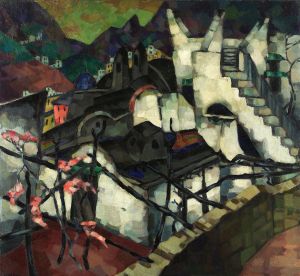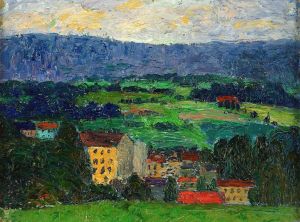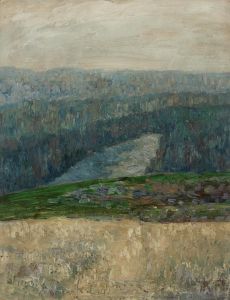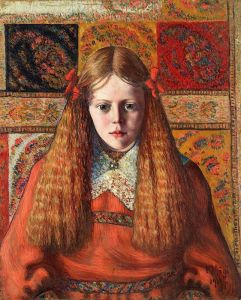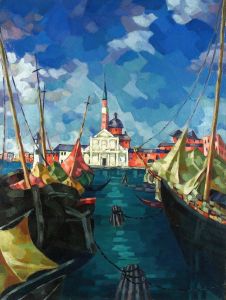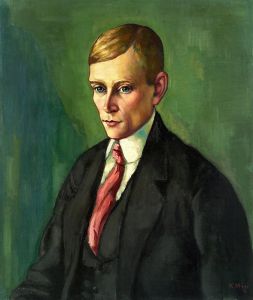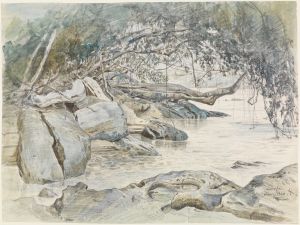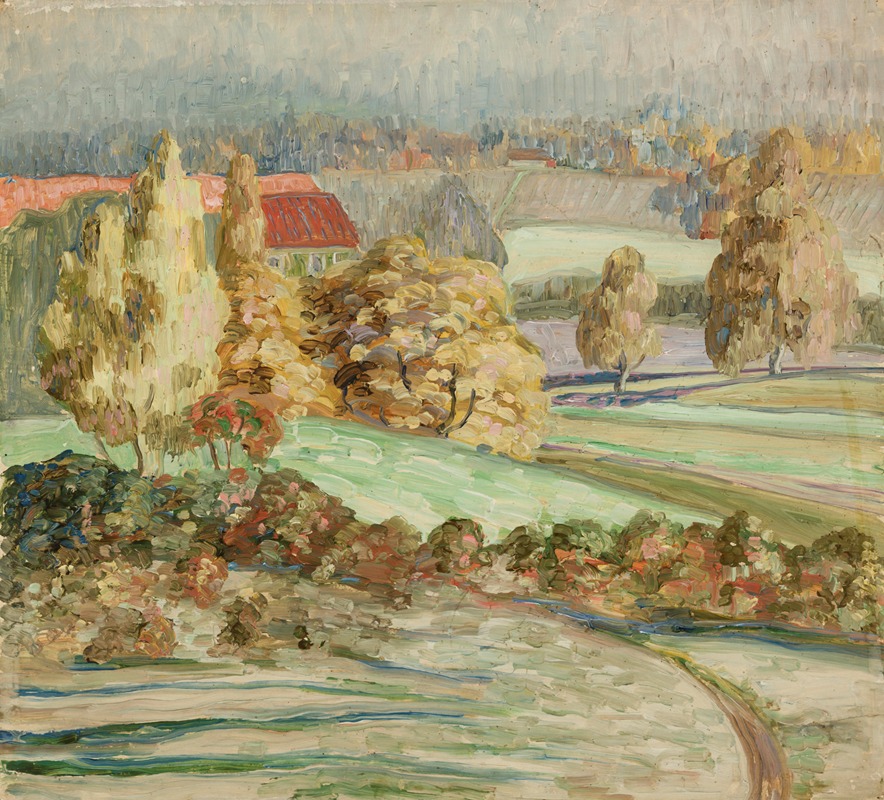
Sügismaastik
A hand-painted replica of Konrad Mägi’s masterpiece Sügismaastik, meticulously crafted by professional artists to capture the true essence of the original. Each piece is created with museum-quality canvas and rare mineral pigments, carefully painted by experienced artists with delicate brushstrokes and rich, layered colors to perfectly recreate the texture of the original artwork. Unlike machine-printed reproductions, this hand-painted version brings the painting to life, infused with the artist’s emotions and skill in every stroke. Whether for personal collection or home decoration, it instantly elevates the artistic atmosphere of any space.
Konrad Mägi was an Estonian painter known for his vibrant landscapes and expressive use of color. One of his notable works is "Sügismaastik," which translates to "Autumn Landscape" in English. Mägi's work is often associated with the early 20th-century art movements that emphasized color and emotion, and "Sügismaastik" is a prime example of his style.
Konrad Mägi was born on November 1, 1878, in the town of Hellenurme, Estonia. He studied art in various European cities, including Saint Petersburg and Paris, which influenced his artistic development. Mägi's work is characterized by its bold use of color and dynamic compositions, often reflecting the natural beauty of the Estonian landscape.
"Sügismaastik" captures the essence of autumn through its vivid palette and expressive brushwork. The painting depicts a landscape scene, likely inspired by the Estonian countryside, which Mägi frequently explored in his work. The use of warm colors, such as reds, oranges, and yellows, conveys the richness and vibrancy of the autumn season. Mägi's technique involves layering colors to create depth and movement, drawing the viewer into the scene.
Mägi's landscapes are often noted for their emotional intensity and ability to convey a sense of place. In "Sügismaastik," the interplay of light and shadow adds a dramatic quality to the composition, enhancing the overall mood of the painting. The artist's choice of colors and brushstrokes reflects his interest in capturing the fleeting beauty of nature and the changing seasons.
During his career, Mägi was part of the Pallas Art School in Tartu, Estonia, where he played a significant role in the development of modern art in the country. His work was influenced by various art movements, including Impressionism and Fauvism, which can be seen in his use of color and form. Mägi's contribution to Estonian art is significant, as he helped to establish a national identity in the visual arts during a time of cultural awakening.
"Sügismaastik" is a testament to Mägi's skill as a landscape painter and his ability to evoke emotion through his art. The painting is part of the collection at the Art Museum of Estonia, where it continues to be appreciated by art enthusiasts and scholars alike. Mägi's work remains an important part of Estonia's cultural heritage, and his landscapes continue to inspire new generations of artists.
Konrad Mägi passed away on August 15, 1925, but his legacy lives on through his paintings, which capture the beauty and spirit of the Estonian landscape. "Sügismaastik" is a prime example of his artistic vision and his ability to transform the natural world into a vibrant and emotive work of art.







